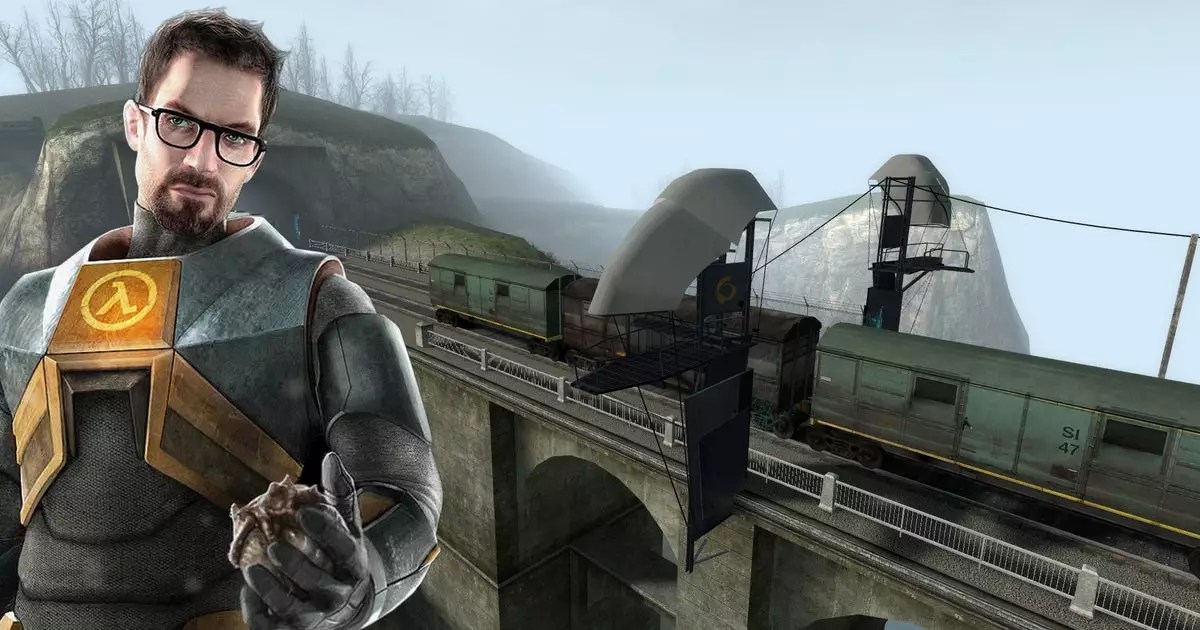In an era dominated by rapid content turnover and fleeting gaming trends, Valve’s decision to update and refine their evergreen masterpiece, Half-Life 2, speaks volumes about their commitment to excellence and respect for their long-standing fanbase. This recent patch, modest at first glance, exemplifies an unwavering dedication to keeping a 20-year-old game feeling fresh, responsive, and aligned with player expectations. It’s not just about fixing bugs or tweaking physics; it’s about preserving a piece of gaming history that still resonates today. The update’s focus on restoring the train’s speed—a seemingly minor change—actually underscores a broader philosophy of quality assurance and a refusal to let the game’s core mechanics become stale or feel outdated.
Small Improvements, Powerful Impact
What might seem trivial to outsiders—the adjustment of the train’s velocity—actually reveals much about the underlying philosophy of game design and maintenance. The train in “Highway 17” became notoriously challenging after physics updates in 2007, turning what was originally a manageable obstacle into a formidable obstacle course. Players accustomed to rapid reflexes and quick thinking now had to resort to unconventional strategies such as reversing and waiting, which, while effective, diverged from the game’s original intent. With this minor tweak, Valve is essentially saying that the game’s intent was never to force players into these workaround tactics but to give them the tools to succeed as originally envisioned. It’s a subtle yet profound reminder: that even after decades, creators still want their works to function as they initially designed, not just as they became over time through unintended side effects.
The Art of the Last Touches
The patch notes also reveal the painstaking attention to detail that Valve allocates to this aging relic. Fixes like correcting NPC collision glitches or addressing minor navigation issues with Alyx—one of the game’s most beloved characters—are emblematic of a developer’s willingness to revisit and polish their creations. At face value, these might seem like minor bug fixes; but they serve a larger purpose: reaffirming a commitment to quality and ensuring that players’ experiences remain as immersive and seamless as possible. It’s reasonable to speculate that these updates aren’t driven solely by necessity but by an affection for the game, a desire to keep it pristine for new generations of players discovering Half-Life 2 for the first time.
The Mythology of the ‘Caretaker’ at Valve
Behind these tiny but impactful updates lies a story of persistence and love—perhaps a hypothetical one—that someone at Valve, whether real or just a symbol of the company’s ethos, remains dedicated to the meticulous fine-tuning of their legacy. Imagining a solitary “caretaker” laboriously navigating the aged interfaces and editing tools perhaps driven by nostalgia or an obligation to preserve the game’s integrity, adds a romantic layer to what could otherwise be dismissed as mere routine maintenance. These last-minute patches serve as a testament to Valve’s belief that even the smallest issues warrant attention because they contribute to the overall authenticity and polish of a legendary title.
Why This Matters Beyond Nostalgia
In many ways, the efforts to refine Half-Life 2 transcend nostalgia. They challenge the modern industry’s tendency to move on quickly, leaving behind potential for preservation and continuous improvement. These updates embody an iterative approach that values quality over marketing buzz or new content—an approach that small indie studios and AAA giants alike could learn from. When a game as old as Half-Life 2 still receives thoughtful updates, it signals that great video games are never truly finished; they are a reflection of their creators’ ongoing engagement and respect for their community. Valve’s dedication hints at a future where legacy titles remain relevant, not just for historical interest but as living, breathing works of art that evolve alongside their audiences.
The ongoing stewardship of Half-Life 2 exemplifies a philosophy that prioritizes clarity, authenticity, and a deep respect for the craftsmanship that makes a game truly timeless. It reminds us that behind every patch note lies a story of care, dedication, and a genuine desire to celebrate the art of game design, long after the initial launch.


Leave a Reply